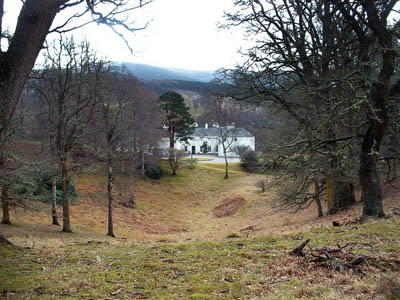A compulsory path order may be used for the first time to drive through an extension to a Highland trail against the landowner’s wishes.
The process under Scotland’s right-to-roam law is likely to be used to extend the Speyside Way south of Aviemore, where national park officers have been unable to agree a route with estate owners.
The land in question is at Kinrara, which was designed in the 18th century by the Duchess of Gordon as part of a settlement by the duchess against her unfaithful husband, the 23rd Duke. It subsequently came into the ownership of former chorus-girl and later suffragette Lady Lucy Houston who hosted society parties. She was a notorious supporter of Mussolini.
Kinrara House and the 445ha (1,100 acres) of land surrounding it are owned by the Clouds Estate which objected to the proposed route of the extension of the 105km (65-mile) Speyside Way, which runs from Buckie to Aviemore.
The Cairngorms National Park Authority on Friday approved the making of a Path Order under the Land Reform (Scotland) Act which, if approved by ministers, will enable the route to be made without the estate’s consent.
Two main routes were considered for the extension south of Aviemore, which will eventually lead to Newtonmore. One, between a railway line and a busy road, was rejected on the grounds that it would be subject to heavy traffic noise and also prompted privacy concerns from householders.
The preferred route uses mainly existing tracks through the Kinrara Estate. It was pointed out a railway underpass is subject to flooding, which would lead to walkers using a nearby unmanned level crossing.
However, national park officers will press ahead with the extension through the estate if it gets ministerial approval. The Speyside Way extension is due for completion in 2014.
The board of the CNPA heard negotiations to secure agreements with land managers have progressed well with the exception of those at Kinrara Estate, who remain opposed to the proposed line of the route.
National park senior outdoor access officer Bob Grant said: “The CNPA has worked alongside key partners to develop the best route that was initially drawn up by Scottish Natural Heritage.
“The route will have wide ranging community and economic benefits from opening up a range of new possibilities for how local people and visitors get around the park, to shops, hotels and pubs that are likely to experience the business benefits of being located close to it.”
The board also approved in principle a contribution of up to £250,000 towards the estimated £1m capital costs of developing the extension subject to a detailed funding package involving other partners.
David Green, the CNPA’s convener said: “It is great to see progress being made on a facility that will allow several communities to get around the park in a more sustainable and environmentally friendly way.
“While it won’t be an all-abilities path, it will cater for a range of users including walkers, cyclists and runners.”

Ian Chadburn
18 May 2010How serious do you as a body want to pursue this article?
There are a number of skeleton's in both the Estate and SNH's arguments. I would gladly expound the various concerns but only if the outcome was to the benefit of both the tax payer and the user